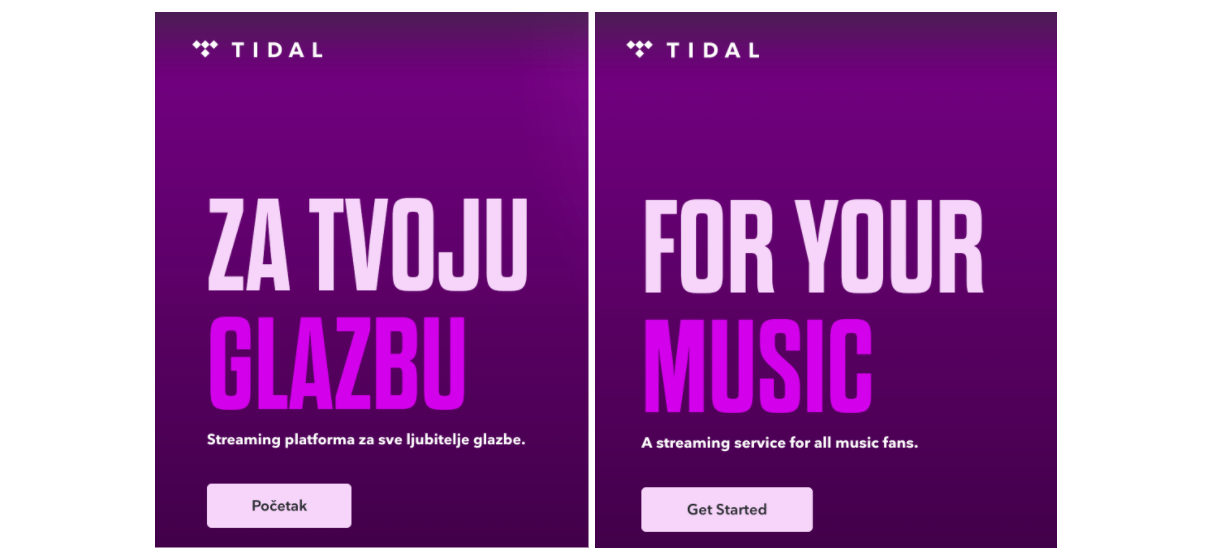How To Use IP Address Data For Digital Media and Entertainment

Digital media continues to outpace traditional media, offering more opportunities for global expansion and revenue growth.
Looking at digital media simply from an advertising perspective, CPM (cost-per-mille) averages around fifteen to thirty dollars cheaper on digital media as opposed to traditional media.
The reality is that digital media is reaching more consumers faster than other forms of media. Consequently, the challenge for these organizations is to outpace other market competition while also maintaining loyalty among their audience.
But despite the global expansion within this industry, there are also a variety of threats that undermine profits. These include plagiarism, abuse of usage, and online piracy (which incidentally costs the U.S. economy no less than $29 billion each year).
Needless to say, in spite of all the opportunities for producers, content creators, artists, and distributors within the digital media and entertainment industry, there are some unique security challenges.
IP address information is one way to address the challenges and leverage the market opportunities within digital media.
A Case Study: CineSend
CineSend is a software company delivering cutting-edge technology to the media and entertainment sector.
During Covid-19, when movie theater and event venues were closing, CineSend recognized opportunities for unique virtual events, including the following:
- Virtual film festivals
- Movie premieres
- Industry conferences
Even though CineSend was thoroughly equipped with DRM and advanced watermarking technology to thwart piracy, they needed to add reliable geoblocking technology to their security arsenal.
That’s when they found IPinfo. With accurate IP data in their toolbelt, they quickly overcame the security challenges within the virtual event space and became a leading provider in this evolving market segment.
“Getting up and running with IPinfo’s API was super straightforward. It’s one API call -- send an IP address with your token, get the info you need.” - D'Arcy Rail-Ip, Lead Developer
The long and short of it is this: New market opportunities within digital media and entertainment can present new security challenges. But it’s possible to stay a step ahead of fraudulent users, piracy, and other illegal uses of proprietary content using IP address data.
CineSend is a great example of how digital media innovators leverage new opportunities and stay ahead of the security issues that often accompany global expansion. However, content protection is just the tip of the iceberg when it comes to IP data within digital media and entertainment.
Think outside the box: Using IP data within digital media and entertainment
As was already mentioned, IP address data reveals information that helps digital media companies protect their assets and improve their market opportunities. Here are some specific action steps you can take to use this data. Plus, we’ve included some extra inspiration to help you use your IP data better than ever before.
Tip #1: Understand IP data accuracy
It’s important to start at the ground level. In the case of IP data, accuracy is the foundation. If you build your use case on shaky data, the whole structure is affected. For instance, geoblocking is only as effective as IP data is accurate.
IP address data, however, is like a moving target. That’s why IP address providers, like IPinfo, need to constantly update and improve databases… so that each use case rests on a solid foundation of accurate IP data.
And while we can’t speak for other providers, we can say that IPinfo updates our database every 24 hours. Drawing from a myriad of proprietary sources, our data team works tirelessly to keep our insights fresh.
In short, regardless of what IP address provider you choose, make sure you understand how they keep their database accurate. Full disclosure: here’s how IPinfo does it.
Tip #2: Develop reliable use cases to protect and grow your investments
Digital media organizations use IP data in different ways. Geoblocking, in other words, isn’t the only application of IP insights.
Here are some additional ways digital media and entertainment companies use IPinfo’s datasets to expand their market share on a global level.
1. Localize content and improve conversion rates
Especially as third party cookies phase out of existence, companies need IP data to localize content while expanding around the world.
Customize language, currency, and pricing
Geolocation insights reveal information such as the country code of each website visitor. Using this data, digital media companies can automatically select the correct language, currency, and location-based pricing options for each visitor.
Take Tidal, for instance. They’re a global music streaming service, specializing in high fidelity sound and hi-def video quality. They automatically pre-select the country for each website visitor.
Croatian users see the first version of the home page, while visitors from Australia will see the second version of the website.

By customizing their website for each visitor, Tidal has improved the user experience while expanding to new global markets.
Digital media companies can customize currency and pricing in a similar way. For instance, Apple Music changes its prices based on the buying power of each region. More on this later. But for now, just know that geolocation information helps digital media companies localize their site appearance while expanding their market share.
Prepopulate forms and personalize content offers
Another way that digital media services can personalize customer experiences is by pre-populating forms. For instance, subscription services can automatically fill in forms with geolocation information to improve the sign-up process.
Additionally, online subscriptions can personalize content based on each website visitor. Magzter, the world’s largest digital newsstand, customizes recommendations based on the country of each user.
For instance, these are the magazines that Magzter promotes for visitors from Canada.
Meanwhile, customers from Japan see these popular recommendations for their region.
In other words, digital media companies can connect with audiences from different countries by populating recommendations based on their IP address. Similarly, streaming services also use IP information to populate relevant video or music options for each user.
All this to say, IP data allows digital media to expand globally while personalizing experiences at scale.
2. Enforce location-based content restrictions
Digital media can also use IP data to restrict content based on geolocation. By way of illustration, let’s consider video streaming services. Most of these companies have different lists of movies and shows based on location and licenses they’ve acquired.
For example, Netflix viewers in the US can watch these shows while users in India cannot.
- NCIS
- Avengers: Infinity War
- The Seven Deadly Sins
- Dexter
This list is by no means exhaustive, but it is meant to illustrate this principle. Streaming services can conserve revenue by paying for licensing rights in regions where viewers are more likely to watch that content.
Using IP information, these services can also adjust content restrictions even if a user travels to a new location. For instance, if a US user visits another country, such as the Czech Republic, Netflix can still restrict access to certain content based on the licenses they’ve obtained for Czechia.
In short, streaming services can use IP data to conserve revenue by limiting licensed content to certain locations. They can then enforce those restrictions with IPinfo’s geolocation insights and privacy detection data.
3. Protect your brand and your content
IP address data can be used to protect proprietary content from online piracy, plagiarism, ad fraud, and more. Here’s how this works.
Using insights from the Privacy Detection API, IP to Geolocation API, ASN API, and other datasets, digital media companies can separate the good traffic from the bad. This information can then be used to prevent phishing and plagiarism.
Additionally, these companies can use Host.io to find domains that contain specific brand names in the domain name or in the metadata.
Let’s go back to Netflix as an example. They’ve built a brand reputation that’s an asset in itself - worth protecting from fraudulent web entities who might try to imitate their site and hurt their reputation.
To protect their website investment, a brand like Netflix could use domain data. Using this resource, they could find all domains that include the name “Netflix” either on the website or within the domain name. Then using IPinfo’s Abuse Contact data, Netflix could automate complaints for abusive or fraudulent domains and associated IPs.
To summarize all of this, digital media companies face threats to their brand and their content. Using IP and domain data, these organizations can protect their assets and hard-earned revenue streams.
4. Block bots and scrapers
Bots, scrapers, and other fraudulent entities create a variety of security problems for digital media companies. They pose as legitimate users while damaging digital investments. This includes gathering company details that help competitors undercut conversions and much more.
Fraudulent entities can also affect ticket inventory and shortages. For instance, in the entertainment and event industry, ticket scalping bots can purchase tickets in bulk for the purpose of selling them at higher prices.
Using IP data, device fingerprinting, browser validation, and other techniques, companies in the entertainment industry - whether virtual or in-person venues - can prevent these attacks and protect ticket prices for regular consumers.
5. Prevent localized pricing policy abuse
As was already mentioned, global streaming services and other digital media platforms need to localize prices based on the buying power of the region.
For example, Apple Music charges a different price for subscribers in India and listeners in Denmark. Even though users in Denmark pay more, an Apple Music subscription only takes up 0.39 percent of an individual’s income. However, users in India pay approximately 0.95 percent of their salary.
The problem comes when users try to get lower prices by disguising their identity and appearing to come from a lower-income country. Digital media companies can prevent localized pricing abuse with Geolocation and Privacy detection data derived from IP data.
All this to say, there are many ways that future-oriented digital media and entertainment companies use IP address data to grow their market share and protect their investments. And we haven’t even mentioned gathering buying intent data and optimizing advertisements.
Tip #3: Find the data you need
IP address data represents a broad range of insights. For instance, an IP address can reveal geolocation data, such as the country, region, postal code, latitude and longitude of the nearest city center, and more. Meanwhile, Privacy Detection data shows which users are trying to mask their identity.
Here’s a simple infographic that shows the datasets that digital media companies use to build their use cases.
IPinfo offers even more datasets than those listed in the infographic, including IP ranges, IP to Company, IP WHOIS API, Host.io, and more. The whole point, however, is this: a variety of digital media and entertainment organizations use our datasets to implement many different use cases
Still not sure what datasets will improve your use case? Our data experts are always ready to help you use your IP data better!
Connect with a data expert to ask questions and develop your use case!
About the author

Internet Data Expert